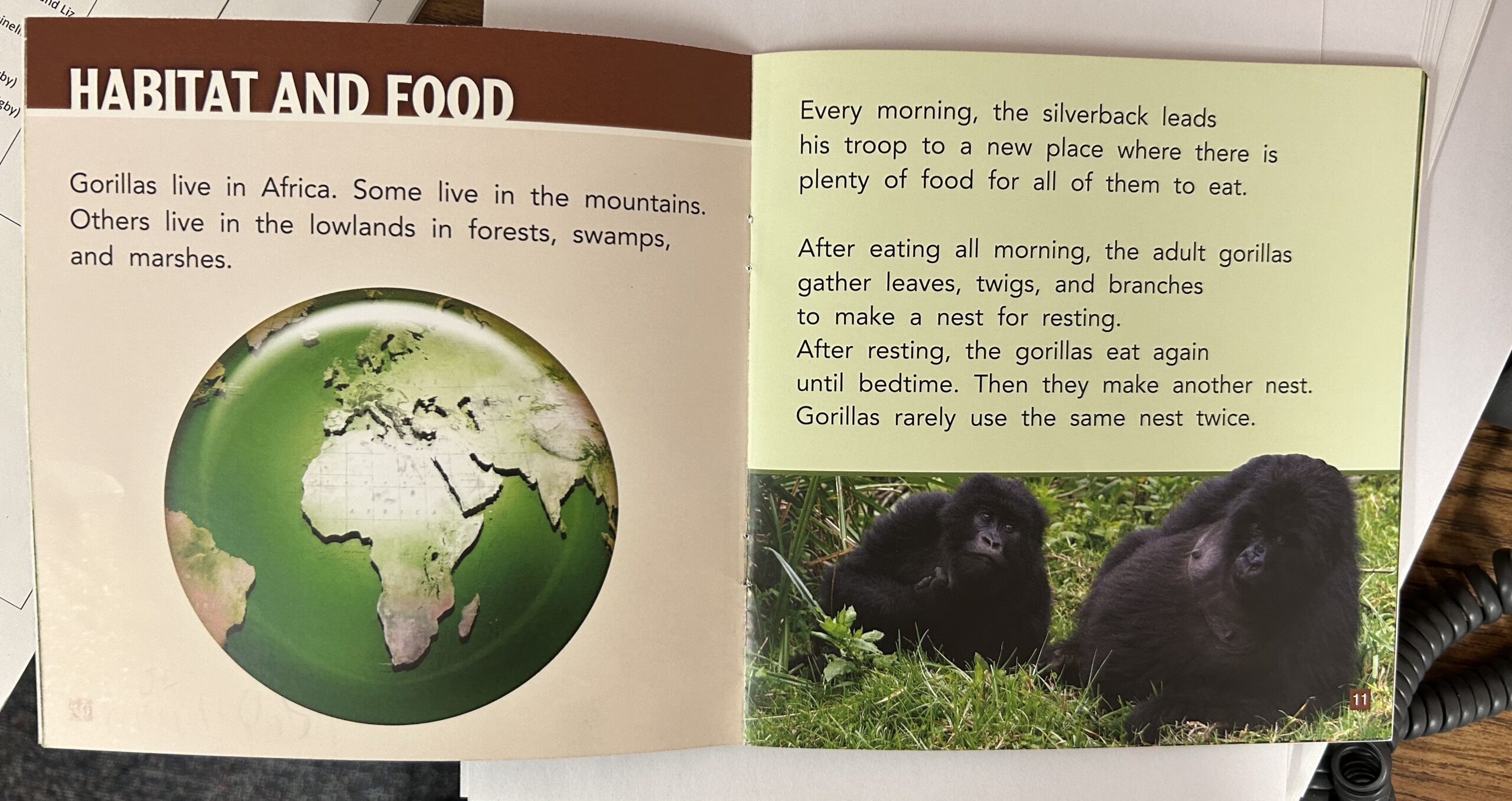
Are your students regurgitating facts from a text without really thinking about the big ideas being conveyed? A few weeks ago a teacher and I conferred with a student reading a book called Gorillas (Pioneer Valley series). When we asked the student, “What’s the main idea?” They shrugged. Here’s a version of what happened during this conference.
Assessed with “What did you just learn?”
Teacher: So what did you learn on this page?
Student: The gorillas eat all morning and then make a nest to rest. Then they eat again and make another nest because they don’t use the same nest twice.
The student revealed a good recall of the details in the excerpt he’d just read. It’s tempting to say “good job” and move on to the next student. Instead we should affirm the student with a constructive comment like, “Sounds like you are monitoring for meaning and remembering several key details in the text.” But you’re not done. You still need to find something to teach. So what happened next during this conference?

Assessed further with “What’s the main idea?”
Teacher: What’s the main idea on this page then?
Student: [Shrugs.]
YAY!!! A place to teach at the point of need is revealed!!!
Thought aloud as a model reader
Teacher: I noticed the author describes in a sequential way what the gorillas do every day in their habitat. For example, the author uses the phrase every morning at the beginning of this page. Are there any other clues that the author is doing this?
[The teacher draws the student into thinking about phrases like after eating, after resting, until bedtime and the word again.]
Teacher: This is a text structure! When I noticed the author’s text structure, I started to realize that this is the gorilla’s daily routine. They do these things every day sort of like humans have things they do every day. How is their routine like ours as humans? [Student responds with a few comparisons.] So what’s the author’s main idea here?
Then the teacher and the student thought aloud together about possible main ideas like:
- Gorillas have a daily routine in their habitats.
- Gorillas have a daily routine just like humans.
- Gorillas rely on their habitat every day for essentials like food and materials to make their nest.
If the student thinks beyond the text here, when they read about how the gorilla’s habitat is being destroyed, they may understand better the consequences for the gorillas who have daily routines that rely on a stable habitat.
Made our teaching point clear
At the end of the conference, our teaching point sounds like the following: “So when you’re reading a nonfiction book like this, it’s not enough to just recall the facts. You need to be thinking about why the facts you’ve learned are important. What’s the bigger idea? Doing this kind of work can help you remember the text better and it can change your view of the world, too!
It was messier than this 😉
Don’t be afraid to push your students. And know that sometimes our fear of this kind of conversation with students is because we ourselves don’t know the main idea of a section of text. Honestly, the conference I described here was messier than I’ve made it out to be! On the spot coaching is hard! If you’re not sure of the main idea, be willing to take a moment to think for yourself or to think aloud and ponder with the student or to muddle a bit! It’s that important!!!
Hope this helps.
S
Image by Freepik
